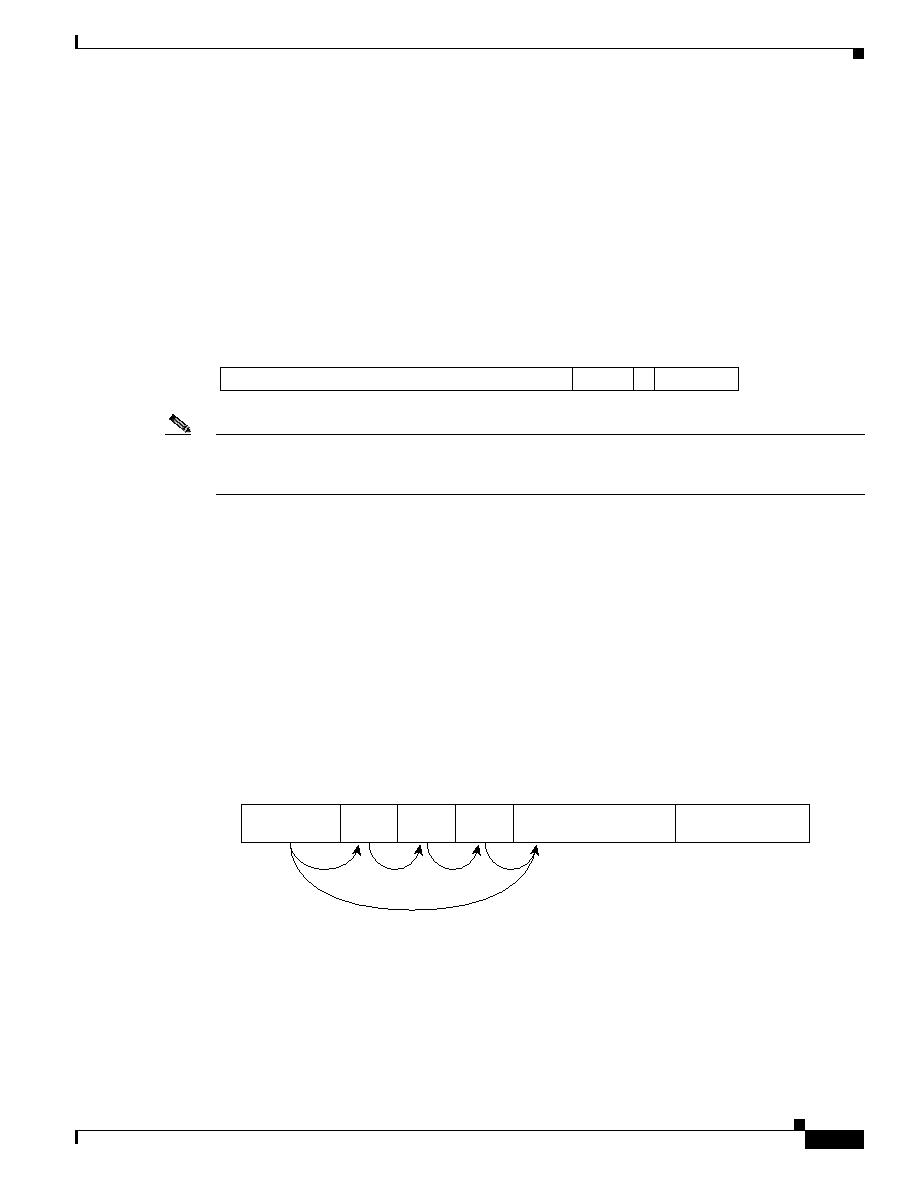
6-3
Cisco AVVID Network Infrastructure Enterprise Quality of Service Design
956467
Chapter 6 QoS with MPLS in an AVVID-Enabled Network
Overview
MPLS Labels
The MPLS label (as shown in
) is 32 bits long and is made up of the following:
·
The 20-bit label field
·
The 3-bit experimental (EXP) field
·
The 1-bit bottom-of-stack bit (labeled S), which indicates if the label is the last label in the label
stack
·
The 8-bit time to live (TTL) field, which is used to prevent indefinite looping of packets
Figure 6-2
MPLS Label Format
Note
The EXP field is 3 bits. Therefore, the full DSCP label cannot be carried. By default, the field is set to
the IP Precedence value of the original IP packet, but this can be changed by applying a policy at the
MPLS node.
MPLS Label Stack
In a typical MPLS network there is only one label assigned to a packet. There are instances, however,
when multiple labels are necessary, such as
·
MPLS VPNs--Two labels are used. The first label points to the egress routers and the second label
identifies the VPN.
·
MPLS TE--Two or more labels are used. The first label points to the endpoint of the traffic
engineering tunnel and the second label points to the destination.
·
MPLS VPNs combined with MPLS TE--Three or more labels are used.
illustrates the format of a stacked label.
Figure 6-3
MPLS Label Stacking
Within the protocol field of a Layer 2 frame, the protocol identifier specifies that the payload starts with
a label and is followed by an IP header. Within the label, the bottom-of-stack bit indicates whether the
next header is another label or a Layer 3 header.
When there are multiple labels within a label stack, the receiving label-switch router uses the first label
only.
78352
Label
0
19 20
22 23 24
31
EXP
S
TTL
Frame
Header
PID=MPLS-IP
S=0
S=0
S=1
Payload
Label 1
Label 2
Label 3
IP Header
78355
